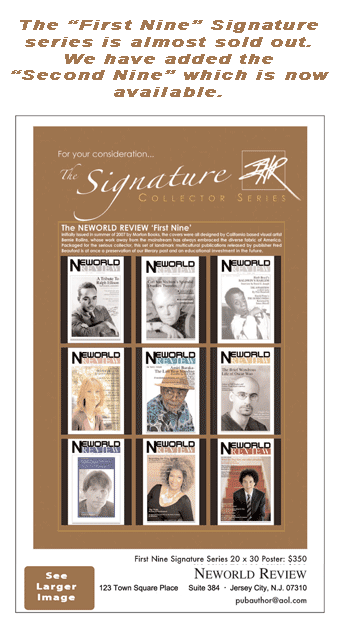REVIEWING
Harlem Renaissance: Five Novels of the 1920s
Edited by Rafia Zafar
The Library of America | 867 pages | $35.00
Reviewed byLoretta H. Campbell
Neither Black Nor Proud
“My color shrouds me in…” (from “The Shroud of Color,” a poem by Countee Cullen) is in the foreword to Wallace Thurman’s novel, The Blacker the Berry. If being black is a living death, then being dark skinned is the hell that comes after death, according to this work. The book exposes one of the most traumatizing secrets of the African Diaspora—colorism. Tragically, this pigmentation fixation is the only disease/remnant of slavery that is fully embraced and often celebrated by people of African descent around the world. It is a known fact that Thurman himself battled his peers in the Harlem Renaissance because of their insistence that the light-skinned should lead the race.
The heroine of the novel, Emma Lou, is dark-skinned. Her father Joe Morgan was dark-skinned and abandoned his wife and child during Emma Lou’s infancy. Thurman intimates that Joe did so to escape the prejudice of his spouse and her family. The girl’s mother clearly has no affection for Emma Lou.
“She had been certain that it [the baby] would be a luscious admixture, a golden brown with all its mother’s desirable facial features and its mother’s hair. But she hadn’t reckoned with nature’s perversity…” The mother often hid her daughter away when company came to visit.
Because Emma Lou comes from a middle-class background, she never wants for material comforts. However, her relatives shun her, and she has no friends in her home town. Despite the emotional lack in her life, she excels in school and goes away to college.
Here Thurman excoriates the infected “blue vein” policy of so many black sororities. When neither Emma Lou nor her one college friend Grace, also dark-skinned, is pledged for a sorority, Grace explains, “Because you are not high brown or half white.” The “half white” specification is significant. The book outlines how important it was to many descendants of slaves to whiten up the race. The closer they were to looking like “massa,” the better they were as human beings, they proclaimed.
Emma Lou’s journey to self-acceptance leads her to Harlem and eventually a career. It also leads her to more emotional abuse and masochism. In many ways, this book is autobiographical. Thurman was dark-skinned and very likely suffered the same bigotry as his novel’s character.
Yet there is a fearlessness in this book that is completely absent in the other four of the volume. Thurman lets the secret out. Though all of these books are well written, none of them takes that step. In fact, three of them bemoan the fate of the tragic mulatto.
In her novel, Quicksand, Nella Larsen sees two classes of Black people. There is the 5% of light-skinned ones. These are the ones with innate privileges and recent white ancestors. Then there are the darker ones. They can neither pass nor make a living, according to Helga Crane, the novel’s protagonist. Helga is the daughter of a white mother and a black father. She has definite opinions about the way black women should dress. “Bright colors are vulgar”---“Black, gray, brown, and navy blue are the most becoming colors for colored”—“Dark complected people shouldn’t wear yellow, or green or red.”
We meet her as she is deciding to leave her job as a teacher in an all-black college in the South. The college, in her experience, simply serves to teach Black people to accept the injustice of racism. Because she has no intention of supporting the school’s legacy, she quits. However, Helga is not as concerned with the treatment of the students as she is with having a life of ease and beauty, or so she says.
On the train to Chicago, she describes in sickening detail the Jim Crow of public transportation. “A man, a white man, strode through the packed car and spat twice, once in the exact centre of the dingy door panel, and once into the receptacle which held the drinking water.” The author doesn’t bother to say that the conductor did nothing about this. There is mention of the filth on the floor and the decrepit seats. Helga begs for and gets a sleeping compartment away from the filth and the other black people.
From this point on, Larsen builds the reasons for Helga’s need to escape into white society. Helga comes into some money, and soon after, she moves to Denmark to live with her white relatives.
“This, then, was where she belonged. This was her proper setting. She felt consoled at last for the spiritual wounds of the past.” Larsen lets Helga and the reader live in this fantasy world for a little while. Then there is a harsh but predictable reality. The story’s title has a stinging irony at its conclusion.
The paradox of Plum Bum, written by Jessie Redmon Fauset, revolves around a long-suffering “mulatto” named Angela Murray. Angela is light-skinned enough to be mistaken for white and begins passing as one as a child. Although she is often exposed for doing this, she continues. As an adult, she is determined to make a living as a painter.
She sees whiteness as a passport to fame and fortune in her chosen career. For a time, she is correct. Once Angela meets a wealthy white man, she shuns her darker skinned sister.
“I beg your pardon, but isn’t this Mrs. Henrietta Jones?”…Really you have the advantage of me. No. I’m not Mrs. Jones.” The denial traumatizes the younger sister, and dehumanizes Angela.
It is almost fitting that the new boyfriend is a racist who has black people thrown out of restaurants. He goes into rants about the “darkies” who leave the South in search of jobs and social equality. In his view, which he expresses to Angela regularly, Black folks have one place—under the heel of people like him.
It becomes obvious that he would kill Angela if he found out she’s black. Fauset shies away from this revelation, however. As a result, the story lacks depth. She describes her book as “a novel without a moral.” That might not be true. The moral seems to be pass if you can, as soon as you can.
There is no interest in subterfuge in Claude McKay’s Home to Harlem.Jake, the novel’s protagonist, is a working class Black man who is proud of who he is. Stationed in Europe during WWI, he deserts the army because he doesn’t like the way black soldiers are discriminated against. From there he (like all the protagonists in this volume) ends up in Harlem.
“Harlem for mine!” cried Jake. “I was crazy thinkin’ I was happy over heah. …O, boy! Harlem for mine!”
McKay’s use of slang and dialect makes the novel vibrant and realistic. His Harlem has nightclubs and after-hours joints. There are dice players, whores, pimps, and violence. Jazz babies rule. Yet McKay makes some serious political points.
When Jake is asked to be a scab during a strike of a predominantly white union, he explains why he refuses: “Nope, I won’t scab, but I ain’t a joiner kind of fellah.” Still Jake knows that racism is alive and well in unions too. “When I longshored in Philly I was a good union man. But when I made New York I done finds out that they gived the colored mens the worser piers and holds the bes’n a them foh the Irishmen.”
Unlike the other characters in these novels, Jake is not judgmental. He is upfront in his views and his friends include gay and straight, criminal and non-criminal, the literate and the illiterate.
Throughout the novel, he is looking for a woman that he had a brief liaison with. He doesn’t know her name, but he’s sure he’ll find her again in Harlem. He lives by his own set of ethics. Though his friends try to encourage him to be kept by women, Jake refuses to let a woman support him. He never criticizes his friends for doing drugs. His motto is he’ll try any drug once, and once only.
By all accounts, the grittiness of the book offended McKay’s peers. They thought he degraded Black folks by depicting the ugly side of (their) perfect Harlem.
Without fear or favor, Jean Toomer’s novel Caneoffers several vignettes on Black life. The work includes poems, stream of consciousness pieces, and short stories. Here too, is violence. White men kidnap and rape black women and insanity abounds.
In one story, “Box Seat,” a man seems deeply constrained while pursuing the woman he loves. Toomer implies that her refusal of him leads him to what is either a psychotic break or a religious experience during a Sunday worship service.
“JESUS WAS ONCE A LEPER?” he shouts. The man’s behavior is so frightening that the woman can’t wait to get away from him.
The word cane appears numerous times throughout this book. It becomes a symbol of Black people continually being cut, broken, or consumed.
The theme of complexion prejudice is repeated here, too. In “Bona and Paul,” college students go on a double date. The dark-skinned black man seems to be modeled on Paul Robeson. He is bright, an accomplished athlete and a natural leader. Unfortunately, he doesn’t understand the flirting cues of his girlfriend.
More than hints are dropped in the tragic “Blood-Burning Moon.” This is the nightmare story of a black woman spurning the advances of a white man in a southern town.
Toomer covers a lot of territory in Cane. He touches on racism, sexism, and anti-Semitism. The poems are existentialistic while the short stories are hard-hitting and earthy.
It’s as if he’s leading the reader through a penny arcade, inviting a brief glimpse at sights on either side of the aisle.
In some ways that is what this volume does. All of the writers examine the collective psyche of Black people. Admittedly, this huge unlimited consciousness has been warped and shaped by slavery, racism, and colorism. All of these isms, though not as present as they were in the 1920s, still inform our lives.
When major pop stars destroy their skin and hair to appear white, something has gone horribly wrong in the Black community. In some ways, Black people in the 21st century still see their skin as grave clothes, as Cullen suggests. Only now, with the new technology, we bleach out the color and are “reborn” as white.




